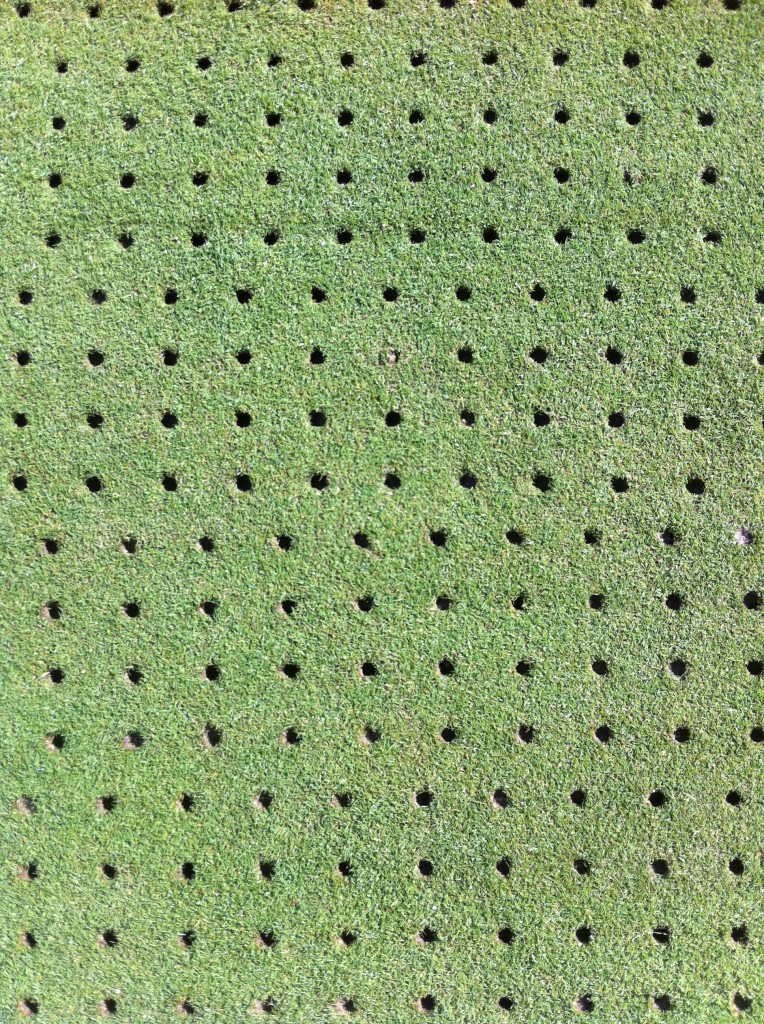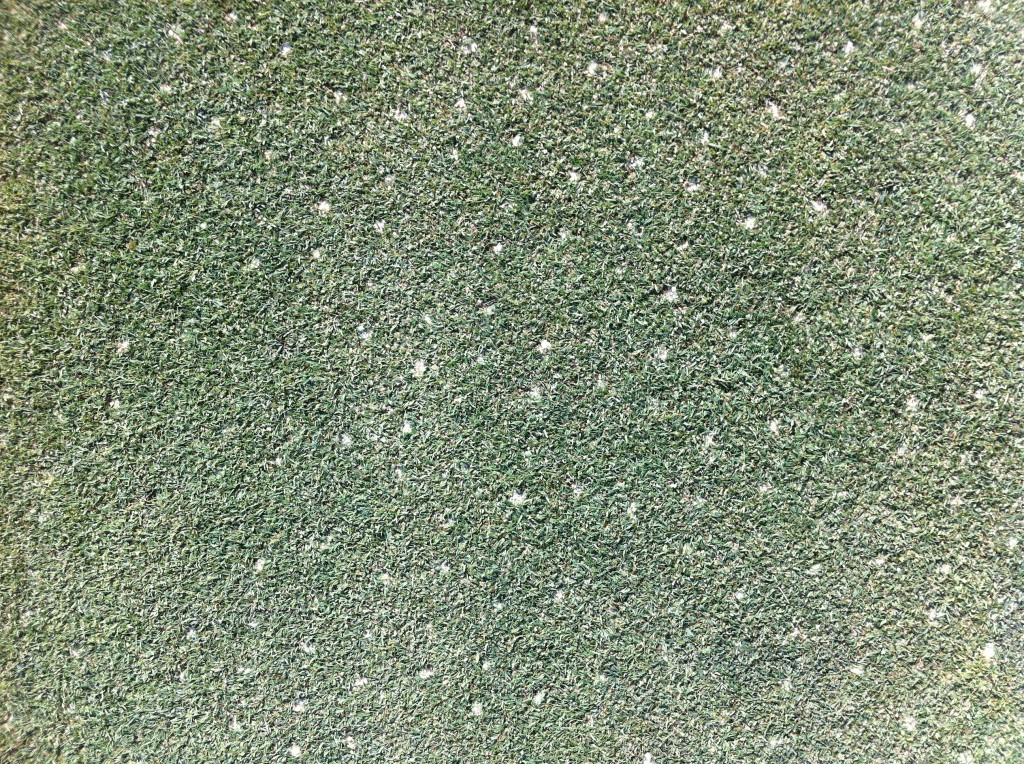The late Spring aerification has already come and gone. Monday April 30th we performed our second aerification of the year. We began in the afternoon following in behind an outing and finished under the light of the moon. Everything went as planned and we are already 75% healed in 8 days. Over the next 2-3 weeks, we will continue to topdress and verticut to resume the ball roll and speed prior to aerification.
Fun Facts From Aerification:
- 12.27 cubic feet of green remove per 1000 square feet
- 1104.3 cubic feet of green removed over all greens
- 9.82% of the putting surface affected
- 72 holes per square foot
- 6,480,000 holes over all greens
Many wonder why aerification is so important. Greens aerifications are a necessary practice to ensure the green’s health for the future. Normally aerification on bentgrass takes place when the plants are at their optimum time for growth and when golfers view the greens are at their best. Performing this cultural practice during this time will provide a speedy recovery and allow adequate amounts of oxygen and applied nutrients to the soil for healing and growth.
When selecting a tine size, tine spacing, and amount of organic matter to remove is a lot more than just a guess or how much you want to make the golfers mad. The USGA provides guidelines for the amount of organic matter removed from a green every year (15-20% OM/Year). These guidelines help to prolong the life of a green and ensure the root zone will stay functioning as it should. Typically 3-4 aerifications a year, similar to this fall aerification, will comply with the USGA guidelines. We plan our tine sizes and spacing to remove 3-8% organic matter per aerification for the year using different tine sizes for different periods of the season. Early Spring and summer aerifications use smaller tines on a closer tine spacing to achieve the correct OM% removed. A smaller tine in a closer pattern will be less disruptive to golfers than the larger tines in Summer and Fall.


